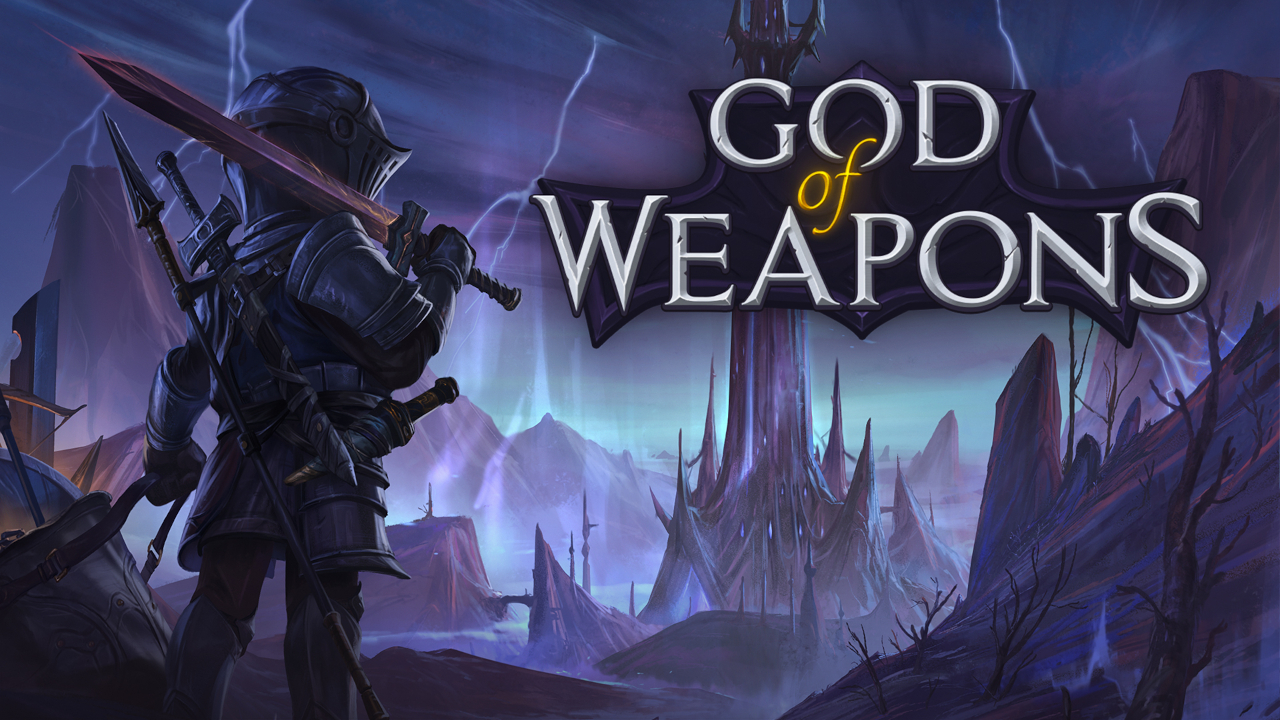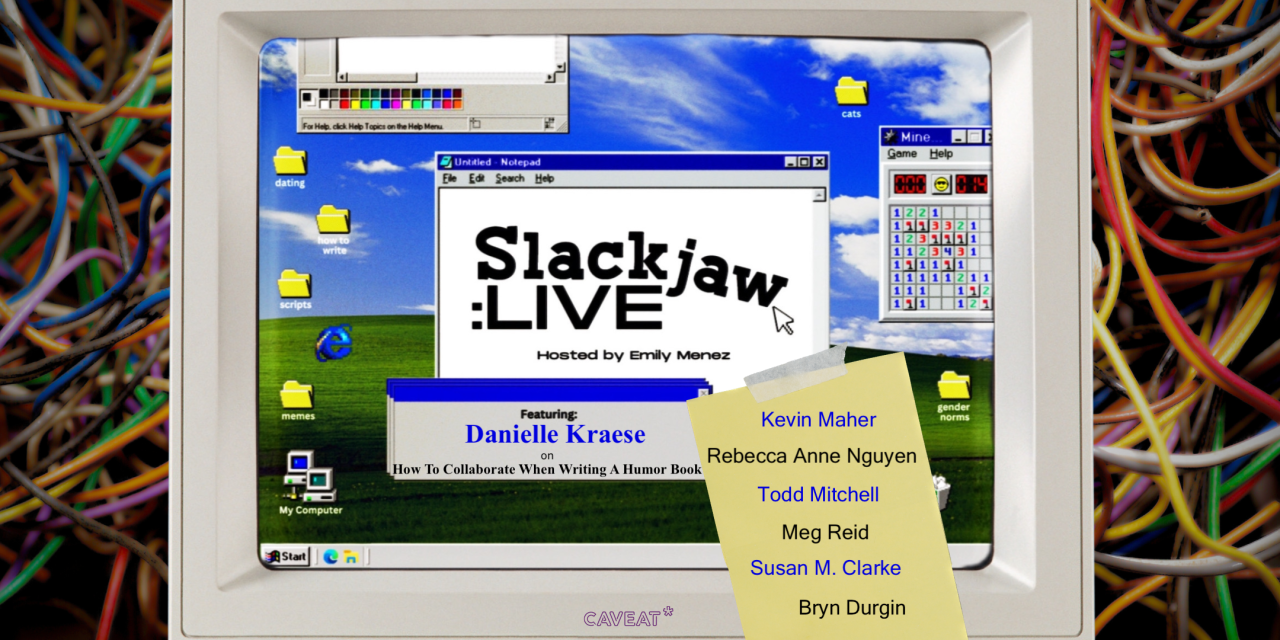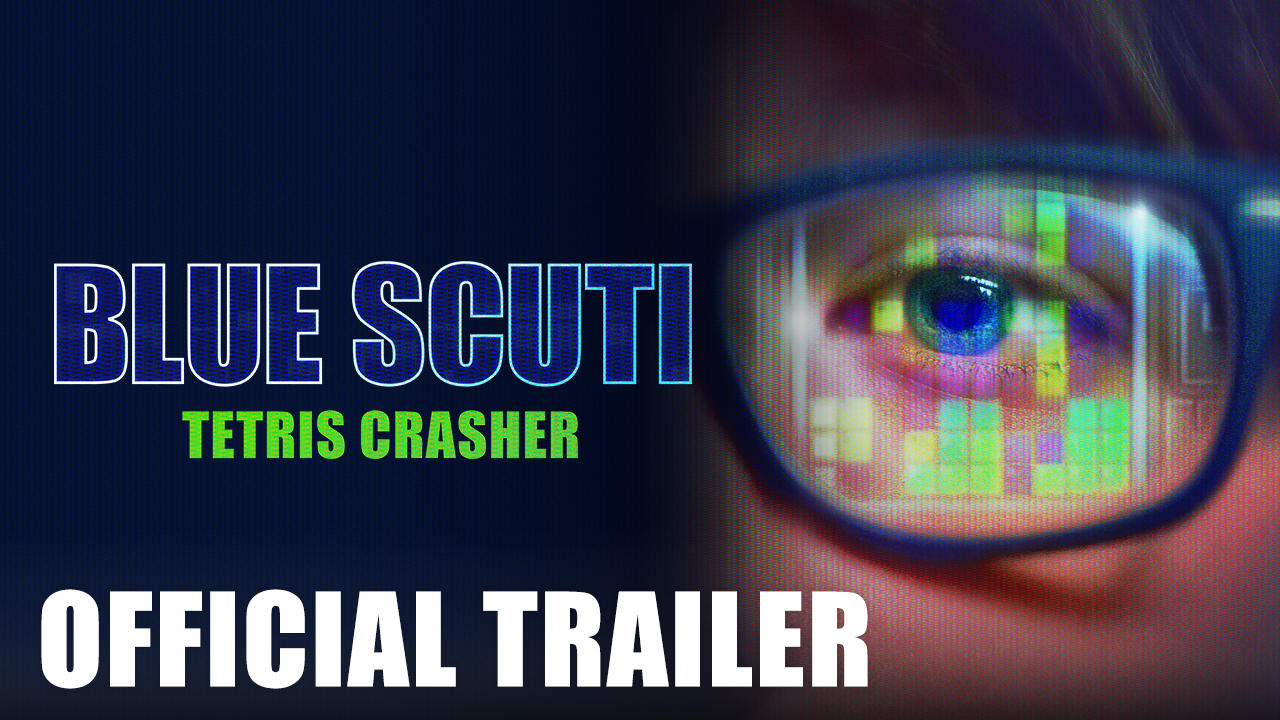I was invited to suit up head-to-toe in the latest VR gear and blast zombies with friends. Here’s how it went.
Check out our video podcast recap on Spotify!
Disclosure: Sandbox VR picked up the tab for our group’s session.
The first person who ever mentioned Location-Based VR attractions to me, oddly enough, was legendary game designer David Fox. David is known (of course) for his contributions to classic point-and-click retro adventures–first at Lucasfilm Games (Maniac Mansion, Zak McCracken and the Alien Mindbenders) and later with Terrible Toybox (Thimbleweed Park, Return to Monkey Island)–but he’s also been a devout technologist for decades, having written about virtual reality as far back as 1992. When he told me he believed modern virtual reality would eventually take hold not because of affordable consumer headsets but thanks to dedicated virtual reality centers, the prediction stuck with me.
Three years after that chat with David, St. Louis has its first dedicated VR space.
Sandbox VR started up in 2016 with the goal of bringing a “holodeck” (yes, like Star Trek) featuring top-end virtual reality hardware and impressive cooperative virtual experiences to every neighborhood. If you’re wondering how that held up during the pandemic, the answer is “barely,” including a 2020 US bankruptcy filing that nearly sank the company. Now, with its 29th location open at City Foundry in downtown St. Louis and investors like Justin Timberlake, Katy Perry, and Will Smith, Sandbox seems to be on the upswing.
When Sandbox’s PR folks invited me to book a visit, the challenge wasn’t finding a group to take–it was finding a time the St. Louis staff could fit us in amidst a steady stream of early customers in the location’s first three weeks of business. A variety of friends expressed interest in checking the place out, and I enlisted the help of all of them who could spare the Saturday evening before Thanksgiving to get the job done.
This was everyone’s first trip to Sandbox VR, and in fact, only a couple of us knew anything about City Foundry where it’s located. As it turns out, Century Electric Co., once a top electrical manufacturer, started producing parts in the building in 1930 and work continued there under various owners for 77 years. After a decade of vacancy, the facility became one of the city’s famous redevelopment projects, becoming a new home to local shops and a large food court. We were all pleasantly surprised by ample free parking, great food, and more cool attractions on the way like a high-tech minigolf course from the creators of Topgolf. To locate Sandbox VR once you’re inside, you only need to look and listen for the crowd.

Sandbox is carefully laid out to draw the attention of onlookers, and it works. As soon as I was close enough to see through the glass storefront, I joined other passersby glued to several demo reel screens showing alternating shots of players decked out in immersive VR hardware and scenes from the games they were playing that wouldn’t look out of place at the top of the Steam charts. Past the groups inside who were either checking in or waiting for their turn, I could see the open holodeck entrances and the players inside, shooting unseen enemies on one side and ducking and dodging something on the other. The effectiveness of the layout was obvious after the group next to me had watched for a moment.
“It puts you in the video game,” said a man a bit older than me when he realized what he was seeing.
“Hilarious,” replied another.
“I want to do it,” the woman with them said in a serious tone.
When my group arrived, we headed to sign in. I was struck by how much technology had to work correctly to make this place function. I used a touchscreen near the door to slide through a timeline for the day and tap on my booking which was right where I hoped to see it. Each of us entered our information and signed the various waivers and agreements you’d expect, and as soon as our fifth and final player completed the process, our guide appeared with a tablet, fully up to speed and ready to walk us through the process.
While we waited for our event room to open up, we watched clips of the various games Sandbox runs for groups. We were there to try the new Deadwood Valley zombie-blasting experience, a follow-up to their popular Deadwood Mansion title, both of which would likely give most gamers a strong Left 4 Dead VR vibe. Other playable sessions include:
- Amber Sky 2088 – fight alien swarms with future weapons and robot enhancements
- Curse of Davy Jones – work together as a pirate crew on the high seas
- Star Trek: Discovery – execute an away mission on an alien world
- Unbound Fighting League – use futuristic weapons to fight your friends (The weapons are designed to create a distance between fighters, but this is about as courageous a use of expensive VR hardware as I’ve seen)
Another guide dropped by to talk us through some of the experiences. He said his personal favorite was Deadwood Mansion because of the horror vibe with a more claustrophobic element than the more open Valley game. He said he’d brought his girlfriend in during his time off to play. We all agreed that’s just about the ultimate endorsement for any place of employment.
I’ll admit at this point that, as a gamer, I’m less enthusiastic than average about horror experiences. I’d played a number of VR games before this point, so I wasn’t worried about having one displayed directly into my eyes and ears, but this would be my first time in a haptic feedback vest. The thought of getting clawed and bitten at from 360 degrees around me had me concerned about the possibility of being the first person to ragequit a fancy VR simulation and, worse, taking the headwear off and still being stuck in the vest as zombies devoured my living body. It was more of a comical sitcom cutaway in my mind than a practical concern, but I felt better when the guide—unprompted, but maybe my face had changed color a bit—explained that the vest felt a little like console controllers when they vibrate in your hand to communicate some kind of impact or shock. That was helpful. I could live with that.
Our first guide returned with her tablet to get our team name, Cheeto Fingers (I’ll explain), each player entered a nickname for the scoreboard, we picked weapons to use in-game which would dictate which style of gun controller we would use, and we smiled for photos that would be used on the scoreboard and in our highlight video later.
The Legend of Cheeto Fingers: the morning of our reservation date, I downloaded a map of City Foundry, marked the three available parking garages and uploaded it on Discord with detailed instructions for the group. Before admitting he would have been lost without these things, one teammate said something along the lines of “Thanks, Dad. I’ll try not to ruin the itinerary with my Cheeto fingers.” I let him know that he had just named the team with his sass, and that we would not be explaining the backstory at the venue.
A few minutes later it was time to head to the back and suit up. The excitement rose as we turned the corner and took in the wall of high-end VR gear. It looked like the scene in every Batman movie when they reveal his arsenal of toys.

Each player starts by strapping multi-pronged sensors around their wrists and ankles. We seem to be inching closer to an age of VR where a headset alone is able to track not only your head position, but your arms and legs as well. In the meantime, it’s crucial for an experience like this that you have an accurate look at where your friends are and vice versa. Next, we were outfitted with those feedback vests from earlier. I was grateful it fit my weird body and the benevolent hardware designers even gave us high-tech abs. We talked a bit of Call of Duty with a guide (the DMZ and Warzone update had just dropped) and he showed me the backpacks that would power each player’s experience.
For the uninitiated: VR headsets fall into “tethered” and “untethered” categories. The Meta Quest, for example, is a standalone, untethered headset. It contains everything needed to display VR inside the visor. It’s a bit heavier and may slightly underperform graphically, but it’s a simpler setup and newer VR users likely won’t mind or even know about the difference. The Valve Index, on the other hand, is a tethered headset for power users. The visor itself has three cords to plug in, and the play area will require between one and four room sensors depending on how precisely you want tracking to function. To further complicate the matter, some untethered headsets can be plugged into a PC to function as a tethered visor.
Location-based VR centers like Sandbox need tethered-level performance without plugging each player into a stationary computer. The answer? Wearable PCs. Several high-end PC manufacturers like HP and MSI have developed compact systems featuring the best graphics cards possible for players to shoulder like a backpack which powers the visor, reads player movement and interaction, and serves up the graphics for the simulation. Our guide told me their backpack systems run “2080s,” presumably meaning NVIDIA GeForce RTX 2080 systems, which meant a few things: this gear was probably an interesting case study in heat and weight distribution, the software was probably going to run very well, and each of us was almost certainly putting on thousands of dollars’ worth of equipment.
At this point, our guides had us round up our personal belongings and head into the holodeck to finish our setup.
Quick tip: This is a great activity here in the Midwest, particularly while it’s too cold outside to do much else. I recommend a coat or jacket with zip-up pockets. The holodeck has convenient cubbies where you can roll up and stuff your coat with your wallet, keys, and phone nicely stowed.
Our group lined up as directed where guides assisted us with our backpack systems, visors, and audio headsets. Having my ears covered, I realized for the first time that City Foundry itself never quiets to less than a low roar. It wasn’t the first time I thought working here must be very fun and, occasionally, a little maddening.
As our gear came to life, we found ourselves in a little branded pre-game purgatory (most VR systems have some version of this) where we could hear and interact with one another. One of our guides popped into our headphones and instructed us to put out our hands to receive our weapon controllers. As we received them, our in-game guns materialized in their places. I’d chosen a shotgun, my teammates selected other options like dual pistols and SMGs. The guide started an in-game tutorial on how to shoot, reload, and revive downed players. Like any good group of friends, we briefly ignored it and started firing at one another, trying to set off each other’s haptic vests.

When we did learn the basics, I was impressed by the gameplay design. Reloading could either be done slowly automatically or quickly by bringing the weapon down to your side. I was reminded of the nicely polished weapon play in Gun Club VR. I would have expected the games to be designed to keep players reasonably far apart. Instead, players revive downed teammates by really, physically placing a hand on their shoulder while they recharge. I was concerned about fast-paced collisions this way, but there was never an issue—and my friends had to do it for me a lot.
As the game started, we found ourselves in a city scene at night, I won’t give too much away, but the production quality was on display immediately. Our weapons allowed us to shine in-game lights on our surroundings which reflected back from the store window in front of me. The non-player characters who appeared around us to act out scenes and present information were well animated and attached to great vocal performances. As waves of zombies closed in there were bursts of slow motion that allowed us to get our bearings and made for a nice touch as it related to pacing.
This is a good spot to mention I play online shooters with most of the group I took, and I have for years. We all have a great time, and I’m typically dead last on the scoreboard. I could make excuses, so I will: I think I’m unable to separate the analytical game developer part of my brain from the part that needs to be focused on playing the actual game. Their minds aren’t weighed down by thoughts about the dust texture on a certain wall while some kid snipes them across the map. I chose to play Deadwood with a shotgun thinking I could keep shufflers off of the actual good players as a form of support play. I joked that if they’d offered a lunchbox with a tracker on it and let me just run around giving first aid, I would have chosen that. I’m sure this crossed their minds as they repeatedly had to revive me during our session.
If you know anything about modern VR, you know it isn’t perfect. Often this is more comical than frustrating, but we did have a few weapon issues. I felt like my shotgun may have been particularly problematic, occasionally blinking in and out of visibility and not always firing exactly when I pulled the trigger. On a couple of occasions, the gun oriented itself straight down at the ground or straight up at my face regardless of where I aimed it. I’m sure I looked like a genius pointing the gun controller at my real head to see if I could compensate for the glitch. One teammate’s gun either stopped firing or disappeared permanently. He raised a hand, and the staff swapped him out so smoothly that most of us didn’t know it happened until he mentioned it after.
Sandbox games are designed to make the players feel like the stars of a movie, and Deadwood Valley did the job well. It told a fun story that was easy to follow for a short period of time and supplied us with no shortage of unsettling scenarios and big explodey stuff—many of us discussed a certain slow-motion flying bus full of zombies that we couldn’t entirely explain but were all glad we saw it. There are branching paths in the game and failable objectives, several of which we sure did fail. We were granted mercy after all wiping out more than once.

We all wondered where the company’s exclusive content comes from. My guess was that industry freelancers were brought in on a contract basis (I’ve been hired for similar roles this way). I’ve since learned that Sandbox has multiple internal studios loaded with AAA talent headed up by a former designer and lead from the Assassin’s Creed series. Based on our experience, it’s going well.
We played through the end of our story and did a post-credits dance party. Looking back, I should have tried to ride my shotgun like a pony for this part, but hindsight’s 20/20. They sent us the very silly video of this afterward. My buddy Bill took the MVP spot with a score that ended up cracking the new St. Louis location’s top 50 on the scoreboard. Me and my spotty shotty were dead last in the group.
After we powered down and turned over our gear, we listened to other groups with great enthusiasm as first-timers screamed with alternating terror and delight. As our highlight videos rendered, I mentioned I imagined it would be fun to just hang out for an entire shift one day and observe everything that goes right and comically wrong. No sooner did these words leave my mouth than another guide came to ask our guide for help with a “body issue.” A prong had popped off of someone’s ankle tracker leaving their in-game character stuck in the splits position. It was an easy fix, but another comical reminder that we’re witnessing the latest round of advancements in a technology that has improved in waves for many decades now, and we’re only getting our first glimpses of what will be possible in another ten years.
Sandbox VR is in a decent position to ride that wave. Their hardware seems relatively adaptable as individual components improve over time. They wisely piece together strong third-party products instead of trying to compete using proprietary equipment. As VR improves, the experience should continue to improve with it, and it’s difficult to get a better look at the height of current virtual reality tech than seeing what a facility like this can piece together with a serious budget and proper motivation to wow players.
More importantly, a dedicated VR center like Sandbox is good for St. Louis. In a market notorious for training technical and business-minded students that have to leave the area for lack of opportunities to do well-suited, meaningful work, we desperately need more kids and parents to see the possibilities in emerging technology, and we need business leaders to see that the region is hungry for it. When I graduated college trained for software development with a passion for video games, there was one games company in town, and they didn’t have any openings. More than 15 years later, the job market at the intersection of tech and entertainment in Greater St. Louis is barely any better off. To fix it, we need more St. Louisans to experience what’s possible.
Sandbox VR opened November 4th in St. Louis. Interested players will want to book reservations through the website–founder Steven Zhao said weeks ago in a LinkedIn post that the STL location already has some bookings into the start of 2023. Check the website for session pricing and program availability. Our thanks to Sandbox HQ for having us out and big thanks to the STL staff members, all of whom were fantastic.
Drop a comment if you’ve been there and leave your thoughts!






Leave a Reply